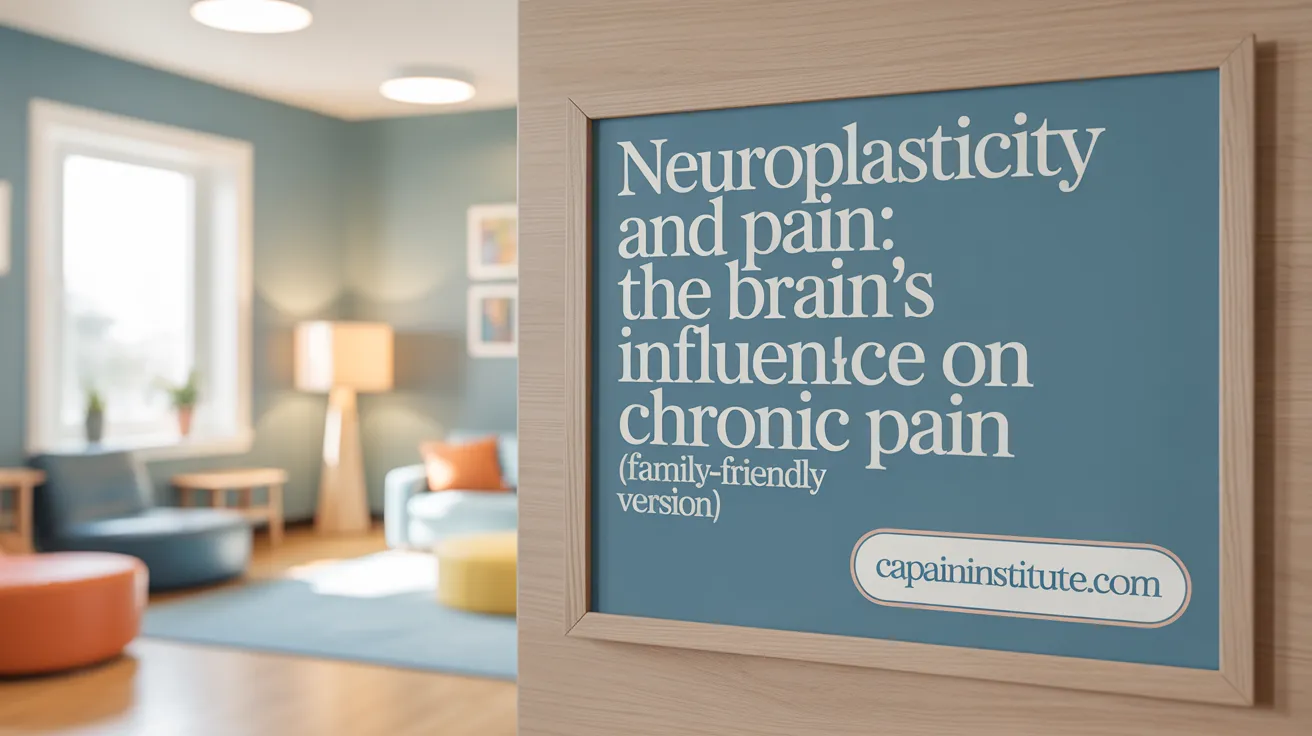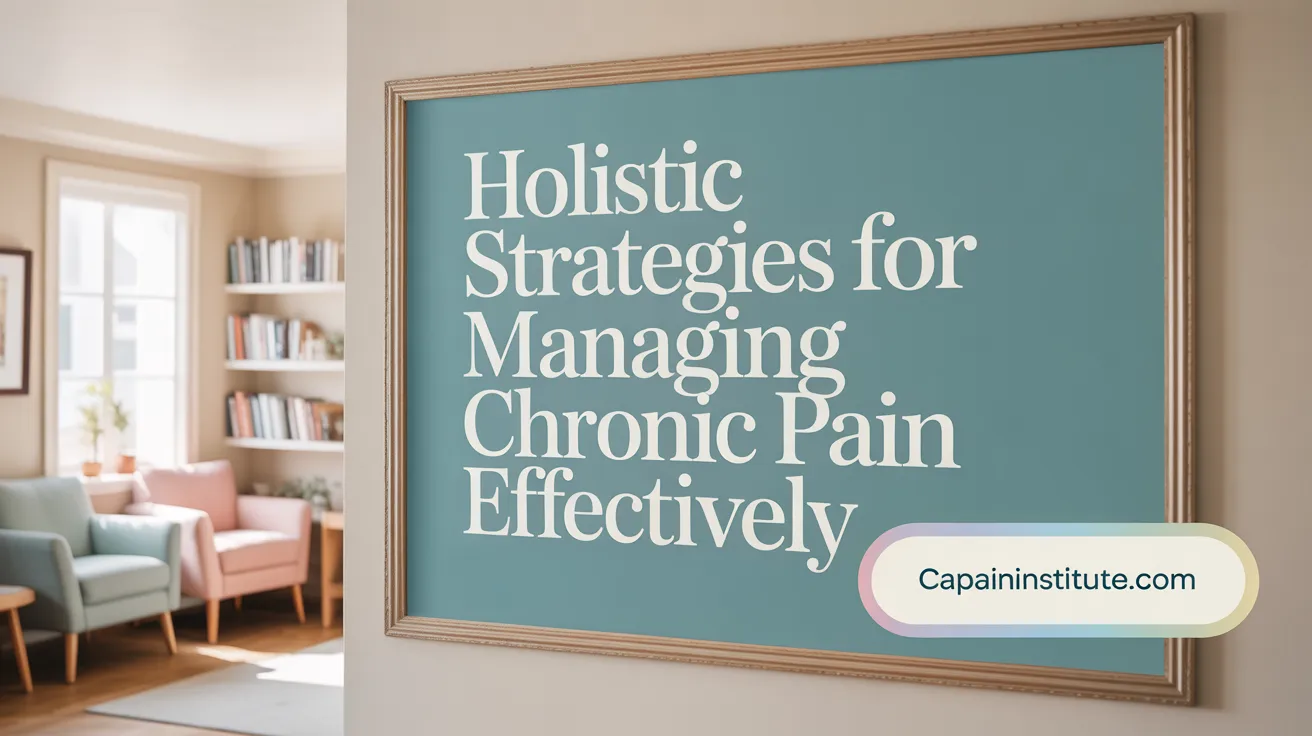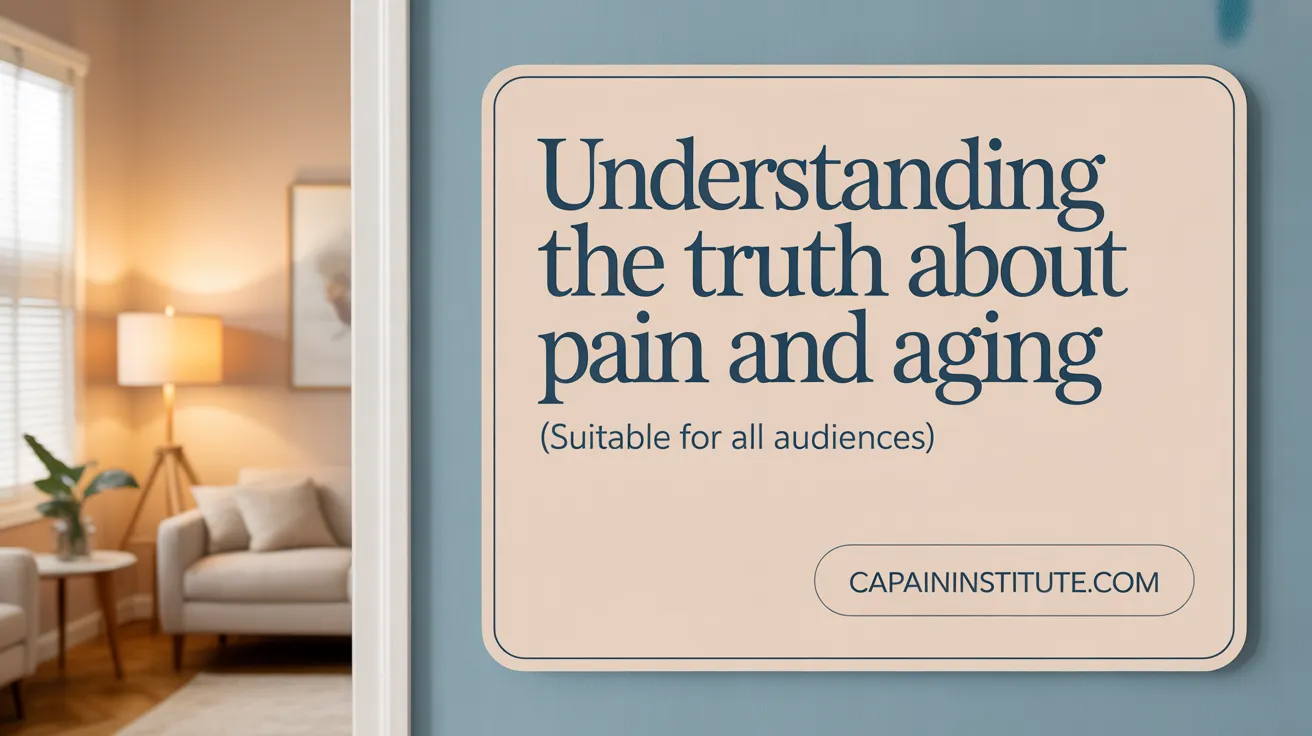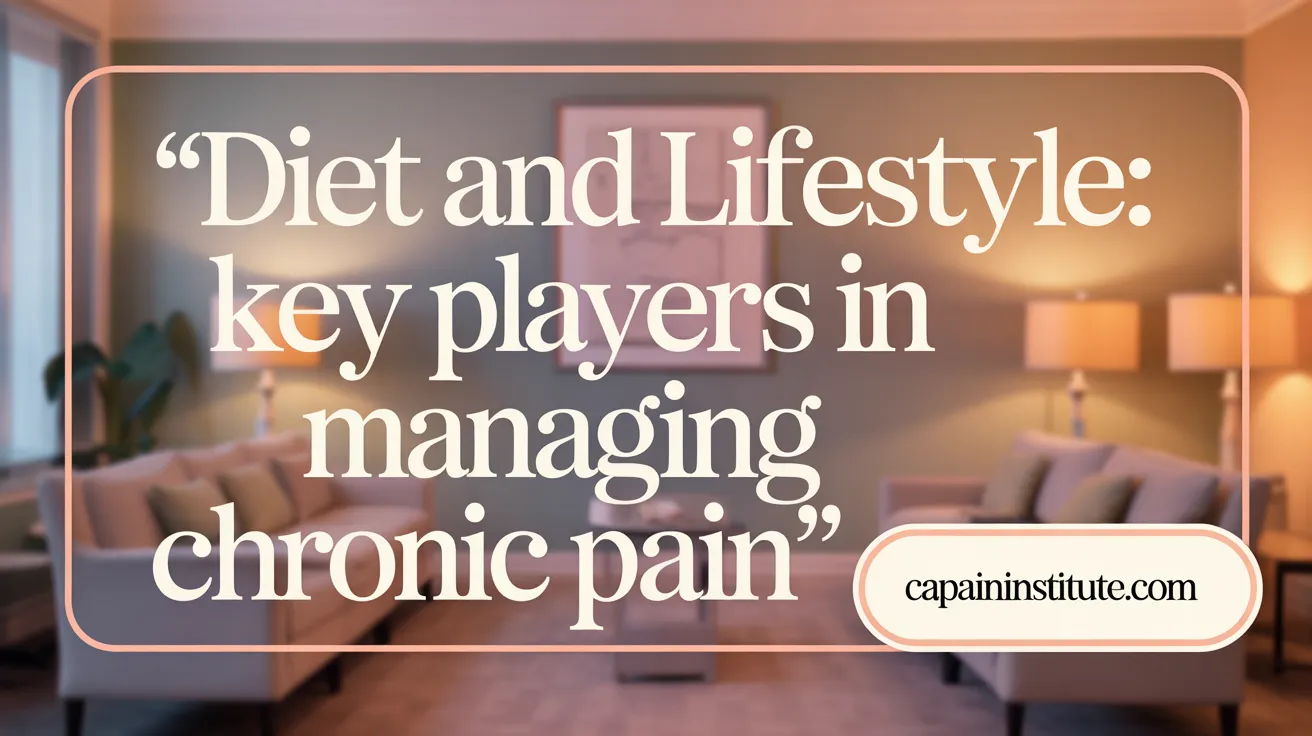The Reality Behind Chronic Pain
Chronic pain is a complex and often misunderstood condition affecting millions worldwide. Despite its prevalence, numerous myths and misconceptions cloud public understanding, impacting how individuals perceive pain and its management. This article aims to dispel common myths about chronic pain, clarify how pain functions in the brain and body, explore evidence-based management strategies, and challenge stereotypes related to aging and persistent pain. By uncovering the truth, we can foster better empathy, improve treatment approaches, and empower those living with chronic pain to lead fuller lives.
<!-- VIDEO:eyJsaW5rIjoiaHR0cHM6Ly93d3cueW91dHViZS5jb20vd2F0Y2g/dj15azAtUzFmM1VpMCIsImltYWdlVXJsIjoiZGF0YTppbWFnZS9qcGVnO2Jhc2U2NCwvOWovNEFBUVNrWkpSZ0FCQVFBQUFRQUJBQUQvMndDRUFBa0dCd2dIQmdrSUJ3Z0tDZ2tMRFJZUERRd01EUnNVRlJBV0lCMGlJaUFkSHg4a0tEUXNKQ1l4Sng4ZkxUMHRNVFUzT2pvNkl5cy9SRDg0UXpRNU9qY0JDZ29LRFF3TkdnOFBHamNsSHlVM056YzNOemMzTnpjM056YzNOemMzTnpjM056YzNOemMzTnpjM056YzNOemMzTnpjM056YzNOemMzTnpjM056YzNOLy9BQUJFSUFGTUFsQU1CSWdBQ0VRRURFUUgveEFBYkFBRUFBd0VCQVFFQUFBQUFBQUFBQUFBQUFnUUZBd0VHQi8vRUFEc1FBQUlCQXdNQ0F3WUNCUTBBQUFBQUFBRUNBd0FFRVFVU0lURkJFeUpSQmhReVlYR0JrYUVXSkVKVTBSVWpNME5TY3BLVm84TFM0ZkQveEFBWkFRRUJBUUVCQVFBQUFBQUFBQUFBQUFBQUFRSURCQWIveEFBaEVRRUJBQUlCQkFJREFBQUFBQUFBQUFBQUFRSVJJUU1TUVdFeFVRU2g4UC9hQUF3REFRQUNFUU1SQUQ4QS9OcVVxY1hoK0tuamIvQzNEZnN4dTI5OFo3NHF2cDBLbHNmd3pKc2J3dzIzZmpqUFhHZldyV3IyUTArOE1VY3l6d01vbGdtWHBKRzN3bjVIc1I2ZzFKTHpHZ3lXUGhQNXJ0Ymp4ZjJjQkN1UHpxYlRmRzFHbFd0TXNqcU41SGJyS2tTdGxubWMrV05BTXN4K2dCUHpybGRDQVhNb3RESTF2dlBoR1hHNHIySngzb2I1MDVVcFNxcFNsS0JTbEtCU2xLQlNsZHJSSTN1RVdkaXNaemtqSHB4MStkUzNVMk5UVFBaWFd0VVV0YVdMQk1BaHBtRVFiUFRHN0djL0tzbTRobHRwM2d1WW5pbVRoNDVGMnN2MUZhdXZhbnFGMXFHNXA1UUVRSkdzVE1BQU91Qm5ybk5YZmJLN211b3ROYTRrek8wQ3RjS3Z3Nzlvd2VuVWc4OG5yV0puOGI4cFpsTXZUNW1sS1YwVkpGM3VxZ2dGaUFDVGdmYzlxdDZscE45cGdWcjIzS1J2bnc1VllPai9BRVlFZzFTcTlvVWFTNnpwME12OUM5M0VHWHNjc0tpWGZ5MDRyTCtTb3dxUVF5YW5zM3l2Y0FNbHR4a0lxbmhwTWNrdHdPblhKcTdMZmFndm5HcWF6NGhJWlZWd1ZNWlhqZ0hidUo3ZmxWajN1Vy9helpyaEJMdWVPNFBqeG95QjVDckErbWVDT3A0K2VhaE1reFZMbTN0Skl2T0kzRUVaalJYWEhobGNONXkzUWYzZ1IyQjRXMjFKMitWSzRzaHFpN0pVZzk5WWhJTHlCQkhIY1NsZDNoT3ZBRG5uREFEbmcvTEYwM1M3N1ZHZGJHMmVUdzhHUnNoVlRQOEFhWTRBNkhyNlZ1VEJiR0c2dUx5U1cxdXZkMlNOeEN4M1NnOEtkd0lENVhkdUIvYkI0NzVmdFFpeCswT3BvZ3dodVdZcU9nWW5KR1BrU2E2WVcwODZqT21qTU1yeE1WTEl4VWxHRERJT09DT3RRcFZtS08wYU5USlBJcm40Z0V5T3ZiN1YwYTNwV3BWb1JXZTQvclQ3ZXg4TTg5Znc3ZXYyNlZYa0NCejRaSlRzVzYwVGFOS1VvcFNsS0JTbEtDN2FhcGRXcFR3eXJiT204WjdFWS9PcTF4UEpjVFBMSzJXWTVQeXJuU3BNWk9kTHUwcFNsVkNwSTdSdXJ4c1ZkU0dWaDJJNkdvMG9OWFdvbzdvRFdMVlFJYnB5SmtIOVRQMVpmb2VXWDVaSGF1ZWw2dmNXTnlqUExOSkFQaWkzOGRNQWpQUWpqQkdDTWNFVjE5bk16VDNkaVNDbDFheUR3MklHNlJWTFI0ejNEQVkrL3JUOUd0Wi9jdjhBV2ovNVZuajRySEU0cnRaVHpYVFM2aHFzODAybjJzM2pHS1NRa1N6SGxZeG51Y2Nuc29QeXpqM0UwbHpQTGNUdHVsbGRwSGIxWW5KUDRtdFAyZ1JyVmRQMC93QXFDQzJWNUkxWUhFemtseVNPL0NqNkFDc2lraTQvWldsWndhVkpiQTNkMU5IY2JTZGlBbnpaT0I4SHBqdWVwNllyTnJRdDladmJheTkwaWRSRnpqeStZWk9ldjNQNG10R2N0bkMxSmE2QXR3Nm5VYnZ3QVVVRXhIY09mTVQ1ZWdIMzRQSFRNSTdmUW16K3ZYbUF4NUVPY0xqcVJqam5qcWUyY1pPMkw2L3FEVHBNelJlSkd6TXJHSlNRVzRPYzllTWpub0R4VDlJTDh5dEs1aFp5RkFKajZiWFpseGowTEhyMnhVYzlaLzFlUjIybU1XRDNFNEdlTmlsdU5veGdiQnU4MlJrN2VuVG11ejJ1Z0t5NHZiM2FWeWN4NFAyR3puN2tZK2ZhUDZUYW5sdHp4Tmxnd3pFUElSM0gvZWFwMytwM1dvYmZlbkRiU3hIWGpKeWU5Rm1PZHZLek5Cb3FTeGlLOXVKSXR4OFJ0cFZzWU9NQXBqazQ1SiszZXByYjZDeEpiVUx0UmhjWml5UWMrYk9CajRjRDZnbmtZRlk5S05kdnRwSkZvNFNBeVhWMFhaVk1xcW9HMGtKa0E0UGN1YytpZ2RUbXZMaUhTUmF5UGIzZHdiZ0JTa2JweDJ5TWdjOVc1NDZkUFhPcFJlMzJVcFNxMFVwU2dVcFhxcVdZS295V09BQjNOQmEwcElaTDFGdVZ0bWpJT1JkU3RHblR1eTgxdSs2YVQrNyt6MytaVC94cjU5Ykc3ZVY0a3RwbWRHWldVSVR0SzUzQS9UQnJYaXZmYU9hNjkwaXR3MCtEL04veWZEazQ0UDdIYXMxenltN3hXWnF5UXgzakxiTGFwSHRHQmF5dEluK0p1YXAxYlRTNzkvRjJXVndmQkdaUDVzK1hxZjhBYTM0R3FwQkJJSUlJNmcxWTNIbGJYczVZeFhWM0VzNmxrSkpjS3dVbFFEd0RXTFY3U3I0V2QzQzhtZkRWd1dLOGtEdmdkNnJ6L2w0WjU5UFdDNXJkakhiM3N5UWdpM0tob3QwbThyMTR6V1hiMjVuVnlza1NiY1pFall6bjBxOXJXb1IzVjB6MnpPNk9QTXpydHdjbm9QVEZaZEhQOExwOVREQ3pOWTkwUGxJbWhJYnBodW5HZWZTdWhzR0VtdzNOc0d6am1USGNqMCtSTlU2VWV6VisxbHJSbFpWTXNPVzlYd0I1ZDNYMDdaOWFrMWc2aGlab0NGQVBFblhyL0NxbE9QU2h6OXBPaGpka2JxcElOUnBTaWxLVW9GS1VvRlhkRnRoZDZwYnhOY3BhcnUzdFBJUmlNS04yZVNCMnFsU2hYNkZQSHJBSGh3ZTBXa2lPUXl5U0x0ampCYnpLVGhRUVF3T1Nmbm1zK1MydmtmU1BlTmZzbWUybmpnZ0tiWE1VY2hLbHllK0FvNFBxT2xmR1lIb0s5d1BRVmp0Y3AwOWVmMC9RYk9UVWxpZ0duKzA5Z2JTTGJEYk1ZMFJnVlFnWlVqb1BNQ2ZvZTlmRDZqYis2M3NrSW1obkEyc0pJZmhiY29iajA2NHgyTlZpTW5KcFZrMDFqaDIwcFNsYWJLVXBRS1VwUUtVcFFLVXBRS1ZldExCTG1EZXR5UEZHU1lWakxNQU8vd0Q3MXJvMmkzUmtTS0NLWjNmT0JKRjRRK0hQeE1jZE8yYU05MFp0SzZYRUVsdFBKQk9vV1NOdHJBTUd3ZnFPRFh0R3R1VktVb0ZLVW9GS1VvRktVb0ZLVW9GS1VvRktVb0ZLVW9Pa0VqeFB2aWtlTnVtNUdLbjhxa2JtNFhCRnhNRDYrSWFVb2FqbTdNN2xuWXN4NUxNY2ttbEtVUi8vMlE9PSIsInRpdGxlIjoiRGVidW5raW5nIENocm9uaWMgUGFpbiBNeXRocyB3aXRoIGFuIEV4cGVydCEgUVBSTiB8IFJRUkQiLCJzbmlwcGV0IjoiRGVidW5raW5nIENocm9uaWMgUGFpbiBNeXRocyB3aXRoIGFuIEV4cGVydCEgUVBSTiB8IFJRUkQuIDg2IHZpZXdzIMK3IDEwIG1vbnRocyBhZ28gTGV0J3MgVGFsayBBYm91dCBQYWluIHBvZGNhc3QgLi4ubW9yZS4gUXVlYmVjIFBhaW4gUmVzZWFyY2ggLi4uIn0= -->Common Myths About Chronic Pain and Why They Persist

What are common myths about chronic pain?
Chronic pain is surrounded by many misconceptions that can hinder effective management and care. One widespread myth is that pain always indicates injury or damage in the body. In reality, pain can continue even when there is no detectable harm, such as in conditions like fibromyalgia where the nervous system overreacts, sending false pain signals. This phenomenon is known as a false pain alarm, and it demonstrates that pain is processed in the brain and not solely dependent on physical injury.
Another misconception is that if medical tests show no damage, the pain must be imaginary or psychological. However, pain is a real sensation experienced by the brain, regardless of test results. It involves complex interactions between physical, emotional, and neurological factors. This understanding encourages patients and healthcare providers to take all pain complaints seriously, even when tests do not reveal clear causes.
Many believe that chronic pain is an unavoidable part of aging. However, pain is not an inevitable consequence of getting older. Conditions like arthritis and nerve damage can lead to chronic pain, but many older adults remain pain-free or manage their symptoms effectively through active lifestyles and proper treatment. Aging does not mean accepting pain as normal; proactive management can make a substantial difference.
There is also a common idea that rest is the best cure for pain, especially in back or joint conditions. While rest is essential immediately after an injury, prolonged inactivity can actually worsen chronic pain by weakening muscles and reducing mobility. Instead, staying active within safe limits, engaging in tailored exercises, and maintaining a healthy weight are proven to alleviate pain and improve quality of life.
Finally, some assume that opioids or medications are the only solutions for severe or chronic pain. In reality, multimodal approaches including physical therapy, psychological support, lifestyle changes, and alternative therapies like acupuncture often provide better long-term outcomes without the risks associated with medication overuse or addiction.
Understanding these myths helps dispel misconceptions, encourages appropriate treatment, and promotes a holistic approach to managing chronic pain.
The Brain’s Role in Chronic Pain: Neuroplasticity and Pain Perception

How does the brain influence the experience of chronic pain?
The brain plays a central role in how we perceive and process chronic pain. It is not simply a passive receiver of signals from the body but actively shapes our pain experience through complex neural interactions and changes.
Brain regions involved in pain processing
Key areas involved in processing pain include the prefrontal cortex, anterior cingulate cortex, amygdala, hippocampus, and nucleus accumbens. These regions comprise the pain neuromatrix, a network that interprets sensory input and emotional responses. In chronic pain conditions, these areas tend to show heightened activity, reduced gray matter volume, and altered connections, all contributing to amplified pain perception.
Neuroplastic changes in chronic pain
Neuroplasticity refers to the brain's ability to reorganize itself by forming new neural connections. In chronic pain, this flexibility can lead to maladaptive changes, where pain circuits become more easily activated and less regulated. This means that pain signals can persist even after tissue healing, with the brain effectively rewiring itself to maintain the sensation of pain.
Neurotransmitters and pain modulation
Neurotransmitters like glutamate and GABA help modulate the transmission of pain signals. Glutamate tends to excite pain pathways, boosting pain perception, while GABA suppresses activity, providing inhibition. Neuropeptides such as galanin also influence pain by affecting neural excitability and motivation, further impacting how pain is experienced emotionally.
How brain changes amplify pain and affect mood
Alterations in these neural circuits do more than increase pain—they can also influence mood, cognition, and motivation. Increased activity in pain-related brain regions often correlates with feelings of depression, anxiety, and frustration. This creates a vicious cycle where emotional distress worsens pain perception, which in turn deepens psychological suffering.
Pain as a complex physical and emotional experience
Understanding pain as a combination of physical and emotional components highlights its complexity. The brain's adaptations in chronic pain not only heighten physical sensations but also affect psychological well-being, emphasizing the importance of holistic treatment approaches that address both mind and body.
| Brain Regions Involved | Function in Pain | Typical Changes in Chronic Pain | Impact on Experience |
|---|---|---|---|
| Prefrontal Cortex | Decision making, modulation of pain | Reduced gray matter volume | Impaired pain regulation, difficulty managing pain |
| Anterior Cingulate Cortex | Emotional aspect of pain | Increased activity | Greater emotional suffering from pain |
| Amygdala | Fear, emotional response | Hyperactivity | Heightened fear and anxiety related to pain |
| Hippocampus | Memory, context | Structural changes | Memory of pain and fear associations |
| Nucleus Accumbens | Motivation, reward | Altered connectivity | Reduced motivation and pleasure |
Understanding these brain mechanisms is crucial in developing effective treatments for chronic pain. Recognizing that pain involves both physical alterations and emotional responses can guide holistic therapies aimed at reversing maladaptive neuroplasticity, improving quality of life.
Evidence-Based Approaches to Managing Chronic Pain: Beyond Medication

What are evidence-based approaches to managing chronic pain?
Managing chronic pain effectively requires a comprehensive, personalized approach that combines different strategies supported by scientific research. This is known as multimodal pain management, aiming to tackle pain from multiple angles for better results.
Pharmacologic treatments include nonopioid medications such as NSAIDs (nonsteroidal anti-inflammatory drugs), acetaminophen, anticonvulsants like gabapentin, and antidepressants like amitriptyline. These are often preferred over opioids for long-term management because they carry fewer risks of addiction and side effects. Opioids may be used in specific cases but are generally reserved due to concerns about dependence.
Beyond medications, nonpharmacologic treatments play a central role. Cognitive behavioral therapy (CBT), acceptance and commitment therapy (ACT), and mindfulness-based stress reduction (MBSR) have strong evidence backing their effectiveness. These therapies help patients change how they perceive and manage pain, reducing emotional distress and improving quality of life.
Physical therapy and exercise are also essential. Gentle, regular activity can improve mobility, decrease stiffness, and promote psychological well-being. Alternative therapies like massage, acupuncture, and herbal supplements may be beneficial as part of an integrated approach.
Implementing an individualized plan is crucial, as pain experiences vary greatly among individuals. Strategies that work well for one person may not be suitable for another. A multidisciplinary team—comprising physicians, psychologists, physical therapists, and sometimes alternative practitioners—collaborates to tailor a treatment plan. This approach addresses physical, emotional, and social aspects of pain, leading to more sustainable relief.
Research supports that such comprehensive, personalized, multidisciplinary strategies are the most effective. They empower patients, reduce reliance on medications, and improve overall functioning.
For more detailed insights, searching with terms like 'multimodal chronic pain management techniques' can provide additional resources and updated evidence on these approaches.
Addressing Aging and Chronic Pain: Separating Fact from Fiction

What are common misconceptions related to aging and persistent pain?
Many people believe that experiencing chronic pain is an inevitable part of getting older. However, research shows that this is not true; aging itself does not automatically lead to persistent pain. In fact, many older adults live pain-free, and conditions like arthritis or nerve damage are not exclusive to the elderly.
A widespread myth is that pain will always worsen over time simply because of age. While some conditions may become more common as we grow older, pain progression varies significantly among individuals. Some seniors may experience stable pain levels or even improvements over the years.
Another misconception involves the attitude towards pain and medication. Some believe that stoicism or avoiding pain medications prevents complications, but in reality, ignoring pain can lead to worsening health and mental health issues such as depression.
There is also a false belief that pain medications, particularly opioids, carry high risks of addiction for older adults. Evidence indicates that the actual risk of addiction among seniors on prescribed opioids is quite low—around 3%, significantly less than commonly thought.
Understanding these facts helps emphasize that effective management of chronic pain is achievable at any age. Proper treatment strategies can improve quality of life, and dispelling myths is vital for encouraging older adults to seek appropriate care.
How does lifestyle influence pain among older adults?
Lifestyle factors such as regular physical activity, healthy weight, and stress management play a crucial role in managing pain. Staying active within limits can reduce stiffness and improve mood, which in turn can lessen the perception of pain.
Conversely, prolonged inactivity often leads to deconditioning, making pain worse and reducing mobility. Moreover, maintaining a balanced diet, managing sleep hygiene, and avoiding excess weight can lead to less pressure on joints and the back.
Weather changes, including fluctuations in barometric pressure, can also influence joint pain, especially in conditions like arthritis. Recognizing these influences can help older adults plan their activities and seek timely treatment.
Ultimately, correcting misconceptions about aging and pain encourages proactive health measures. When older adults understand that their pain isn't an inescapable consequence of aging, they are more likely to pursue therapies that enhance their well-being and functionality.
Nutrition and Lifestyle: Integral Components of Chronic Pain Management

Can diet impact chronic pain symptoms?
Yes, the food choices we make can influence the severity and management of chronic pain. Diet impacts inflammation levels and immune function, which are closely linked to pain perception.
Consuming foods rich in anti-inflammatory properties—such as fruits, vegetables, omega-3 fatty acids from fish and flaxseeds, nuts, and whole grains—can help lower systemic inflammation that contributes to chronic pain. These nutrient-dense foods support overall health and may reduce the brain’s sensitivity to pain signals.
On the flip side, diets high in processed foods, added sugars, saturated fats, and refined carbohydrates tend to increase inflammation. Such foods can worsen pain symptoms, making management more difficult. It’s important to assess nutrient levels like vitamin D, B12, magnesium, and zinc, as deficiencies in these nutrients are associated with increased pain perception.
Research suggests that adopting dietary patterns like the Mediterranean diet or plant-based eating habits can provide broader anti-inflammatory effects and promote healing. Incorporating nutritional assessments into a pain management plan can help tailor dietary modifications that effectively support pain relief.
In conclusion, a well-balanced, anti-inflammatory diet plays a crucial role in mitigating chronic pain and improving quality of life. Alongside other treatments, mindful eating habits offer a simple, accessible way to complement ongoing pain management strategies.
Moving Beyond Myths to Empower Pain Management
Dispelling pervasive myths about chronic pain is essential to fostering understanding, compassion, and effective care. Chronic pain is a legitimate, multifaceted condition influenced by complex interactions between the brain, body, and environment—not simply a symptom of injury or aging. Recognizing the brain’s role in pain perception, embracing evidence-based, multidisciplinary treatments, and appreciating the critical contributions of diet and lifestyle enable individuals to better manage their pain and improve quality of life. By challenging misconceptions and supporting ongoing research and education, we can empower those living with chronic pain to overcome barriers, reduce stigma, and access the compassionate care they deserve.
References
- Myths About Chronic Pain | SBM - Society of Behavioral Medicine
- 8 Myths and Facts About Chronic Pain - WebMD
- 5 Common Myths About Pain Debunked
- Debunking Common Myths About Pain Management Medicine
- Debunking Chronic Pain Myths: Dispelling Misconceptions
- Common Pain Myths Debunked: What You Need to Know for Relief
- Common Myths About Chronic Pain – Separating Fact from Fiction
- Debunking Pain Management Myths for Better Relief in Marrero
- Is Chronic Pain Real? Myths of Chronic Pain - CHOC
- 5 Common Pain Myths Debunked - Knox Community Hospital
